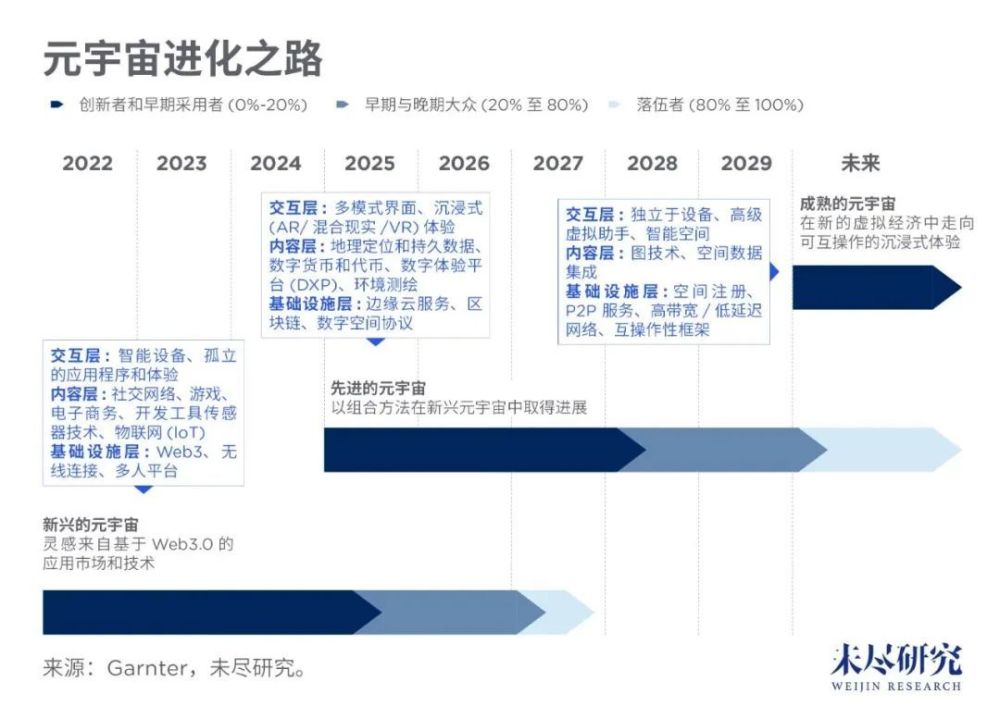30 years ago, before the Internet became widespread and browsers were not yet invented, science fiction writer Neil Stephenson published the novel Snow Crash, in which he fictionalized a dystopian reality in which the characters in the novel created a parallel virtual world for themselves in the Metaverse.
30 years later, Stephenson wants to turn the metaverse from fiction to reality. He has become a co-founder of a company building an infrastructure based on a layer 1 blockchain, and his vision is for creatives around the world to unite to form a true metaverse.
Stephenson acknowledged that Zuckerberg's change of the company's name to Meta is an important milestone in the development of the metaverse. The concept of metaverse has vague connotations and infinite extension, but it can be roughly divided into two categories: centralized metaverse and decentralized metaverse. Stephenson believes that there is only one metaverse in this world, made up of countless scattered, equal, and interoperable units.

Compared to Stephenson's open metaverse, Zuckerberg wants a centralized metaverse. Incidentally, another area Zuckerberg once ventured into was cryptocurrency (Libra), which later failed. Meta (Facebook) has created huge bubbles in both industries, experiencing crashes and crashes in 2022.
Meta wants to build a centralized metaverse flagship in a short period of time, including the headset Meta Quest and the virtual reality game Horizon Worlds. That effort has already suffered setbacks, with Meta's stock falling 60 percent last year and metaverse division Reality Labs losing $10 billion. Whether it is developing a killer app or establishing a business model, it is still very far from the metaverse. Unlike free downloadable software such as Facebook and Instagram, the biggest hurdles that users need to overcome to enter the virtual world are headsets and VR applications.
After the release of Meta Quest2, Carmack, the former head of Meta Virtual Reality and former CTO of Oculus, criticized Meta's software-to-hardware product: lack of basic usability. Meta employees aren't keen on using the company's products, and internal meetings on Horizon Workroom often switch to Zoom. In addition, building an ecologically complex metaverse requires mergers and acquisitions, but the US government has become very wary of the monopoly of technology giants and has begun to intervene to prevent them from acquiring virtual applications.
In contrast, Stephenson will personally build a Theee Metaverse, where he puts original stories on the Lamina1 chain and invites creatives to play with them. And this open metaverse itself becomes the first layer of infrastructure for those creatives, helping them enter a metaverse connected by interoperable protocols - the only metaverse.
Whether it is centralized or decentralized, the focus of the metaverse in 2023 will be the breakthrough of devices, that is, devices such as VR and AR that can provide users with "basic availability", and the cost performance is easy to popularize, so that more users can enter the virtual world. The latest version of headset technology provides eye contact and facial expression tracking, and avatars in virtual spaces have improved social interaction. But the price of the premium version of Quest Pro is as high as 10,000 yuan, which has become a high threshold.
Trendforce, Countpoint, IDC, VR Gyro and other institutions have all made predictions for VR device shipments in 2022 and beyond. Countpoint is one of the institutions that make the most optimistic forecast, and it is expected that annual shipments will exceed 100 million in 2025, ten times in five years. The reason for optimism is that in 2023, Meta's Quest 3, Apple's VR/AR devices, and console gaming giant Sony's PS VR2 will all be released this year. Pico will also launch Project Pico World, challenging Meta's Horizon Worlds.
The giants are keen on the centralized metaverse. Apple's VR device released in 2023 will really spark enthusiasm for VR, but it will still be a closed system for the Apple Store. China's bytes are building their own ecosystems of devices, stores and content. Tencent is also actively developing more "authentic" technologies for use in its game and video businesses, and will also explore more areas that integrate with entities. But Tencent has no plans to do hardware at present. Google will enhance and enrich its existing maps, search and other businesses through AR through smart glasses. Microsoft's metaverse is more combined with its MR headset Hololens and cloud services to serve B-end users. Microsoft is also working with Meta to promote its virtual meeting product.
AIGC (AI-generated content) technology significantly improves the dialogue and communication ability between machines and humans, which will further improve the interactive experience of virtual humans. For example, four employees of LaMDA, Google's chatbot model, left to start a business, founded the artificial intelligence role platform character.ai, and created various conversational bots.
OpenAI has just unveiled a prototype of the 3D DALLE (called "Point-E"). Together with Google's DreamFusion, 3D model synthetic artificial intelligence, which can be widely used in film, gaming, design and various scientific fields, could be the next big industry disruptor.
From an ecological point of view, decentralization and centralization are also forming their own camps. Metaverse developers such as Decentraland and The Sandbox have joined several Web3 projects in launching the Open Metaverse Alliance (OMA3), which focuses on building a more transparent, inclusive, decentralized and democratized metaverse.
On the other hand, the centralized metaverse, represented by tech giants, has also formed its own Standards Forum (MSF) and establishes standards for a more open and interoperable metaverse. MSF's members include 35 technology companies including Meta, Microsoft, Nvidia, Alibaba, Unity and Sony.
There is only one universe, but there will be many metaverses. What we will see is a centralized metaverse and a decentralized metaverse, a Chinese-style metaverse and an American-style metaverse.